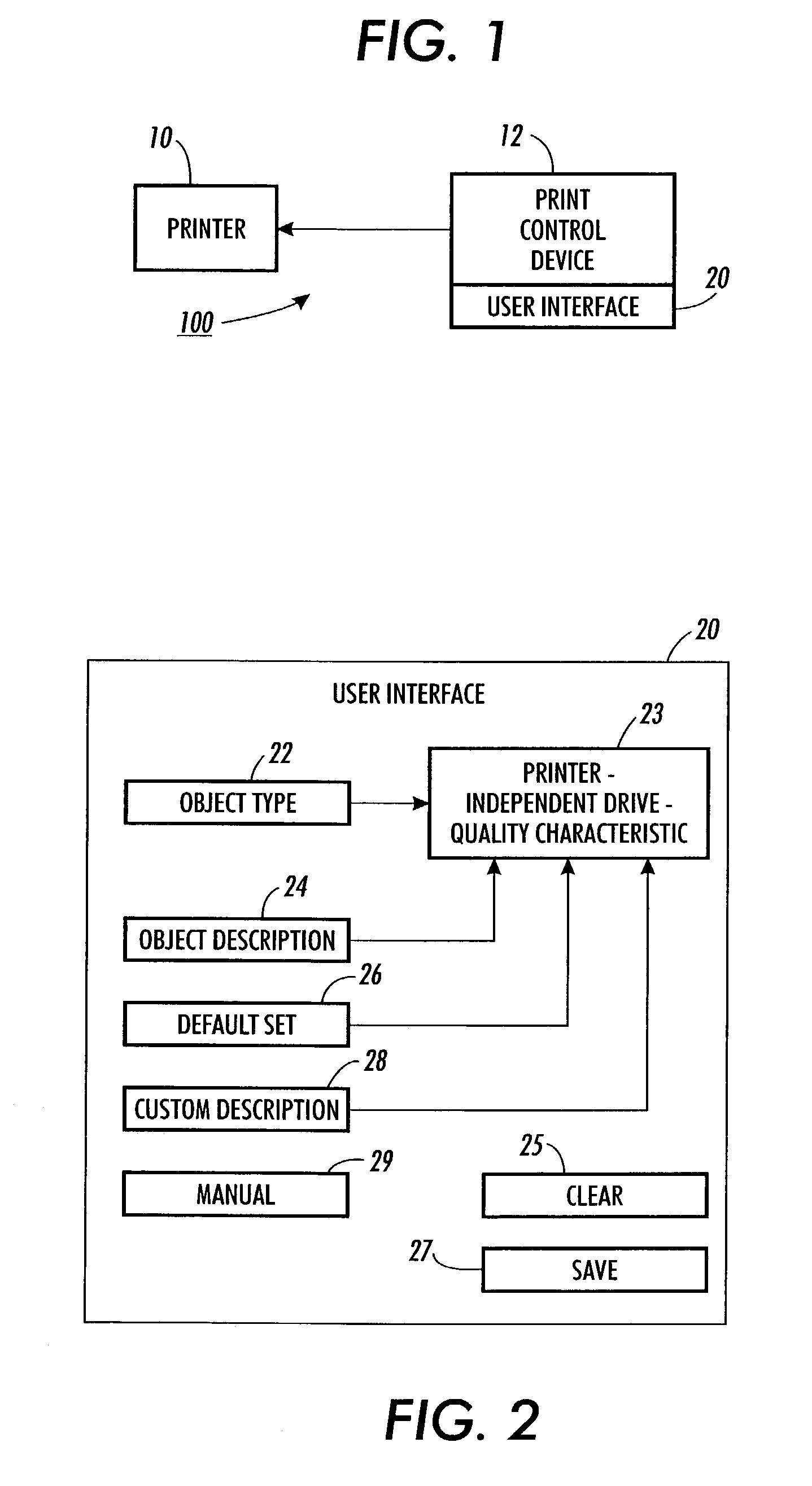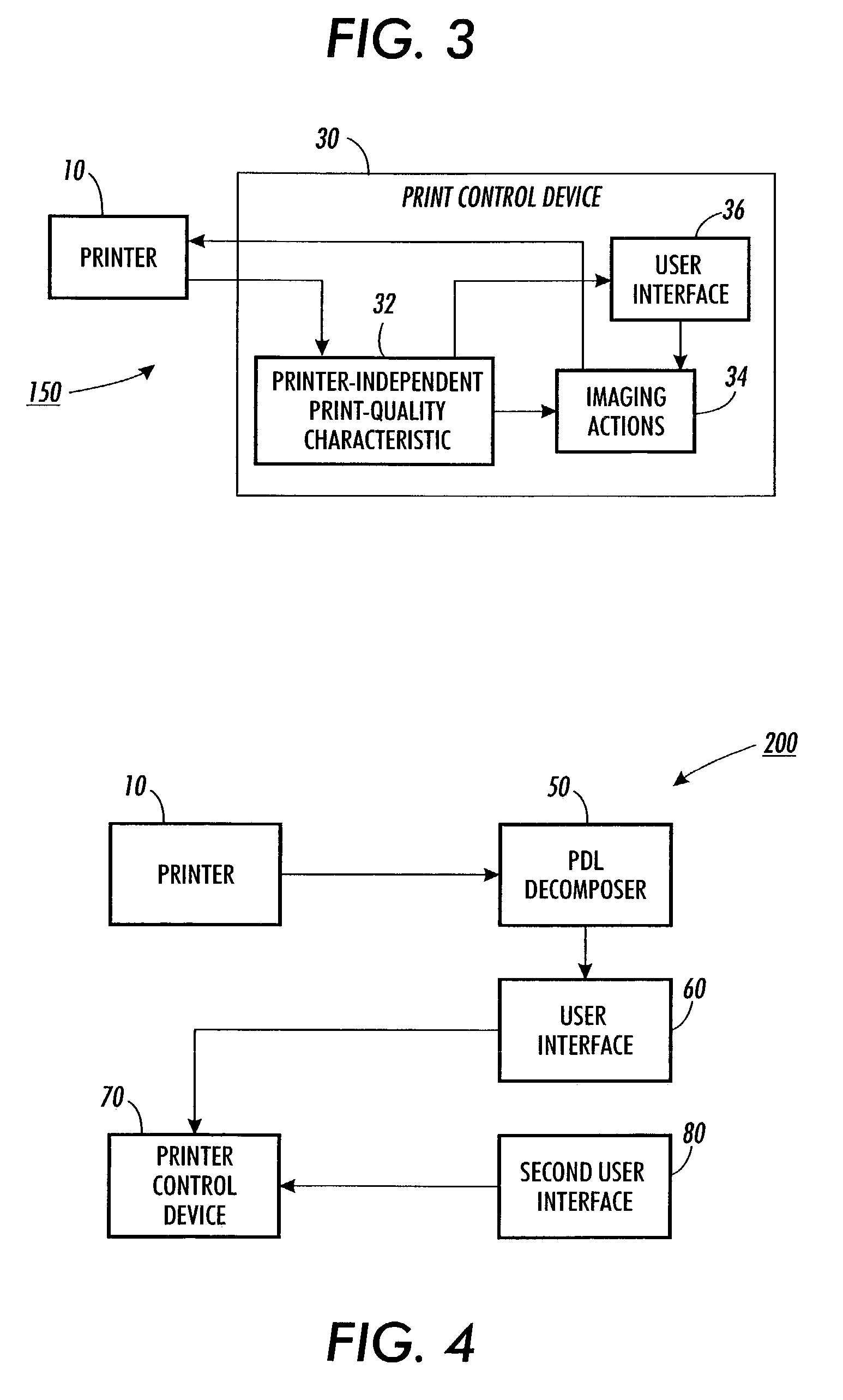Printing system and method
a printing system and printing method technology, applied in the field of printing systems, can solve the problems of reducing the tiny color deletion known as mottle in the interior, unable to specify specific processes for rendering individual page elements, and unable to achieve the effect of reducing mottle, reducing moiré, and maximum tone depth
- Summary
- Abstract
- Description
- Claims
- Application Information
AI Technical Summary
Benefits of technology
Problems solved by technology
Method used
Image
Examples
Embodiment Construction
[0023]A printing system for use in printing image objects of any of a plurality of different object types, according to one embodiment of the invention, is shown in FIG. 1 and referred to by reference numeral 100. Printing system 100 includes a printer 10 and a print control device 12 with a user interface 20. Referring to FIG. 2, user interface 20 includes a first option 22 for associating printer-independent print-quality characteristics 23 with a selected object type to be printed by the printer. A single object type could be associated with one or multiple printer-independent print-quality characteristics.
[0024]The user interface associates printer-independent print-quality characteristics with image objects. A printer-independent print-quality characteristic is an instruction associated with a particular image element or elements (such as an image object) on an electronic page. A printer-independent print-quality characteristic can be thought of as a guide indicating an importa...
PUM
 Login to View More
Login to View More Abstract
Description
Claims
Application Information
 Login to View More
Login to View More - R&D
- Intellectual Property
- Life Sciences
- Materials
- Tech Scout
- Unparalleled Data Quality
- Higher Quality Content
- 60% Fewer Hallucinations
Browse by: Latest US Patents, China's latest patents, Technical Efficacy Thesaurus, Application Domain, Technology Topic, Popular Technical Reports.
© 2025 PatSnap. All rights reserved.Legal|Privacy policy|Modern Slavery Act Transparency Statement|Sitemap|About US| Contact US: help@patsnap.com



